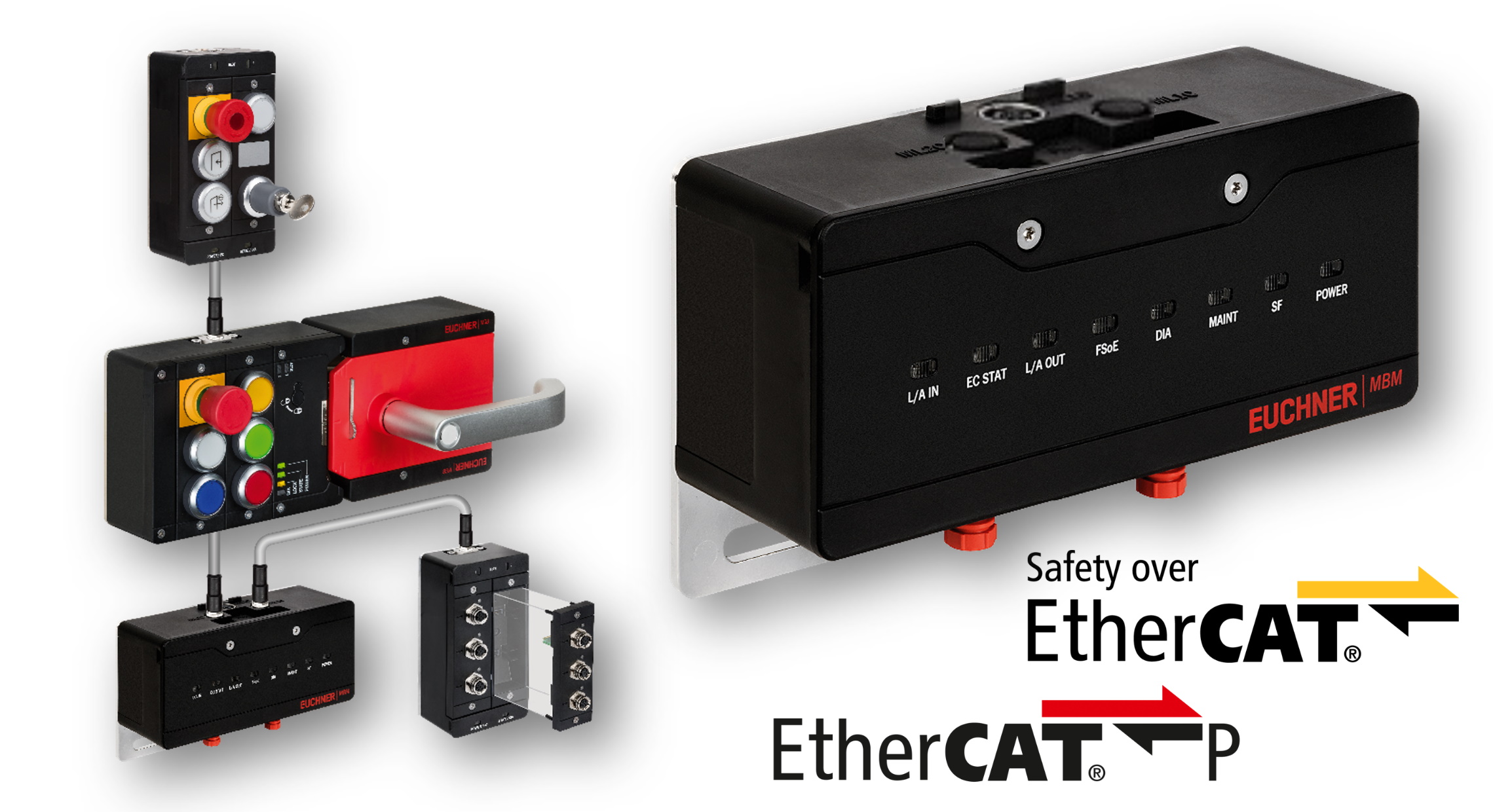 EtherCAT and EtherCAT P, both with FSoE, are the latest interfaces for the multifunctional gate box system MGB2-Modular from Euchner. Regardless of which interface, the MGB system always achieves PL e – Cat 4 – SIL3.
EtherCAT and EtherCAT P, both with FSoE, are the latest interfaces for the multifunctional gate box system MGB2-Modular from Euchner. Regardless of which interface, the MGB system always achieves PL e – Cat 4 – SIL3.
Bus systems bring simplicity to the complex world of machine safety. That sounds strange, but configuring safety systems is actually easier with bus systems than with traditional parallel-wired systems. There is a bus solution for every platform: In addition to EtherCAT (P) with FSoE, other interfaces have existed for some time: ProfiNet with ProfiSafe and EthernetIP with CIPsafety. Each bus platform connects to its own world of controls. There appear to be certain preferences in Europe, North America and Asia. For the MGB-Modular door lock it does not matter in which control world it is used.
Due to the modular composition of this door lock, the bus interface is only in one module; the so-called 'bus module'. This determines to which bus platform the door locks are connected. The bus module contains, among other things, the chipset for the relevant bus. You can manually give an address to the bus module using dip switches.
The request for this new interface came from the world of EtherCAT users, with their control manufacturer in the lead. With joint input, the development process has led to this latest innovation.
The door lock MGB2-Modular EtherCAT with FSoE;
– 2x M12 bus connectors and 2x 7/8” power connections
– 6 door locks can be connected to one bus module
– Including the 6 door locks, there is room for 36 secure elements (buttons, functions, etc.)
The door lock MGB2-Modular EtherCAT P with FSoE;
– 2x M8 combined bus/power connections (current maximum 3 A)
– 4 door locks can be connected to one bus module
– Including the 4 door locks, there is room for 36 secure elements (buttons, functions, etc.)
FSoE means Fail Safe over EtherCAT. It is a security data transmission arrangement via EtherCAT. Within such an agreement, safety data is delivered within a certain time and this data is unmistakable, or perhaps unique.
This bus system has a traditional master-slave structure. You can branch almost endlessly, but you must pay attention to the maximum amount of data that can be processed by the bus. Sending safety data via bus systems costs quite a bit of data and therefore causes busy bus occupancy. The door lock on an entrance door continuously communicates its status 'the door is closed, the door is closed, the door is closed...', together with its address so that the recipient knows which door it concerns. Other safety-relevant messages are sent in a similar manner.
Replacing a bus participant (such as a door lock) or expanding or contracting the system is easy. It is only necessary to make changes to the topology. You must of course be a qualified programmer and also have knowledge of functional machine safety.
Functional safety is quite simple, but you have to learn to look at it in a certain way. Euchner therefore provides training that provides insight into how safety components communicate with each other. This has changed quite a bit in the past ten years. Industry4.0, Internet-of-Things, Big-Data, etc. Yet essentially bus telegrams have not changed. Different communication methods are compared in this training. Functional safety is quite simple, but you have to learn to look at it in a certain way.